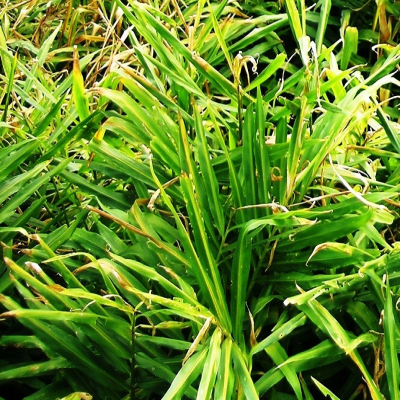Zingiber officinale Rosc.
Family : Zingiberaceae
Group : 4. Thrikadu, Anti tussive (expectorant), Anti-arthritic/anti-rheumatic/anti-inflammatory, Stomach disorders/carminatives/laxative, Antipyretic
Parts Used : Rhizome
Vernacular Names :-
| English | : | Ginger |
| Malayalam | : | Inchi |
| Hindi | : | Adarak |
| Sanskrit | : | Ardrakam |
| Kannada | : | Ardraka |
| Tamil | : | Inci |
| Telungu | : | Allamu |
Distribution and habitat: Cultivated throughout India, run wild in some places in the Western Ghats.
Botany: A slender, perennial rhizomatous herb with robust branched rhizome borne horizontally near surface soil.
- Leaves : Linear, sessile, glabrous.
- Flowers :Yellowish green in oblong, cylindric spikes, ensheathed in a few scarious, glabrous bracts.
- Fruits : Oblong capsules.
- Rhizomes: White to yellowish brown in colour, irregularly branched, somewhat annulated and laterally flattened. The growing tips are covered over by a few scales. The surface of the rhizome is smooth and if broken a few fibrous elements of the vascular bundles project out from the cut ends.
Properties: stimulant, stomachic
Chemical constituents:
- The essential oil is a pale yellow liquid with a warm spicy sweet strongly aromatic odour and sharp pungent flavour.
- The chief constituent is a sesquiterpene, called zingiberene.
- The pungent principle of ginger is zingerone.
Uses:
- The dried rhizomes are esteemed for its flavour, pungency and aroma
- The essential oil and oleoresin extracted from the rhizome is used in the manufacture of flavouring essences and in perfumery.
- Taken internally, it is a stimulating carminative and externally it is used as a rubefacient and counter irritant.
Formulations: Suranadi leham, Ardrakaghrtam
Agrotechnology
Soil and climate: The plant prefers a rich soil with high humus content. The crop cannot withstand water logging and hence soils with good drainage are preferred for its cultivation. It requires a warm and humid climate. It thrives well from mean sea level to 1500 m. A well distributed rainfall of 1500‑3000 mm during the growing season and dry spells during land preparation and harvesting are congenial.
Propagation: The seed rhizome is 2.5‑5 cm long having at least one good bud. They are preserved in covered pits. Smoking of seed rhizome is also practised to enhance germination and ward off pests and diseases. Rhizomes with less fibre, which varies from 1.7-9.0%, have a higher demand.
Planting: Land is prepared during April‑May. A good tilth is required in order to produce good shaped rhizomes; in hard soils they are often malformed. Rhizome seeds at the rate of 1000‑1500 kg/ha are planted on raised beds at 20‑30 cm spacing and 5‑10 cm deep.
Varieties: Varieties preferred for green ginger are' Rio‑de Janeiro', 'China' and 'Wayanad local' and Aswathy. For dry ginger, 'Maran', 'Wayanad', 'Manantody', 'Valluvanad, Kuruppampady, KAU Chitra, KAU Chandra etc are preferred. Athira, Karthika, IISR Varada, IISR Rejatha and IISR Mahima are dual purpose.
Manuring: Ginger benefits greatly from the application of organic manures. 25‑30 t/ha of cattle manure or compost is applied at planting. Fertilizers are applied at 75:50:50 kg N, P2O5 and K2O/ha. Full dose of P and half of K may be applied as basal dose. Half dose of N may be applied 2 months after planting and the remaining quantity of N and K may be applied 4 months after planting. Being an exhausting crop, ginger is not cultivated continuously in the same and hence crop rotation crop is practiced.
After cultivation: Mulching is an essential operation for high yield. Application of leaf mulch during planting and after each topdressing followed by earthing up, using a total of 20 tonnes of green leaves/ha is essential.
Plant protection: Root knot nematode (Meloidogyne incognita) and shoot borer (Dichocrosis punctiferalis) attack the crop. Shoot borer can be controlled by spraying dimethoate or quinaplhos at 0.05%.
Leaf spot caused by Colletotrichum zingiberis and Phyllosticta zingiberi, rhizome soft rot caused by Pythium aphanidermatum and bacterial wilt caused by Pseudomonas solanacearum are the common diseases of ginger. Leaf spot can be controlled by spraying with 0.2% thiram. Soft rot can be prevented by treating seed rhizomes with any copper-based fungicide. When incidence of the disease is noted in the field, dig out the affected plants and drench the beds with Cheshunt compound or 1% Bordeaux mixture.
Harvesting: For vegetable and preserved ginger, the crop can be harvested from 6 months and for dry ginger, harvesting is done during 8‑9 months after planting. The yields vary from 20‑30 t/ha fresh ginger, which produces 20‑30% of dried ginger. Irrigated crops have produced yields as high as 40 t/ha.
Processing: For the production of dried ginger, the rhizomes are washed in water, carefully scraped and dried in the sun for 5‑6 days. The scraped or peeled ginger is known as ‘uncoated ginger’ and that with the epidermis still attached as ‘coated ginger’. The rhizomes are sometimes bleached by sulphur fumes or lime water. The dried rhizomes may be powdered to produce ground ginger. The essential oil is generally obtained from un-scraped powdered ginger. Steam distillation for 10‑15 hours yields 1.0‑2.7% oil. Ginger oleoresin is obtained by solvent extraction of powdered, dried ginger. The average yield is 4.5‑6.5%.


